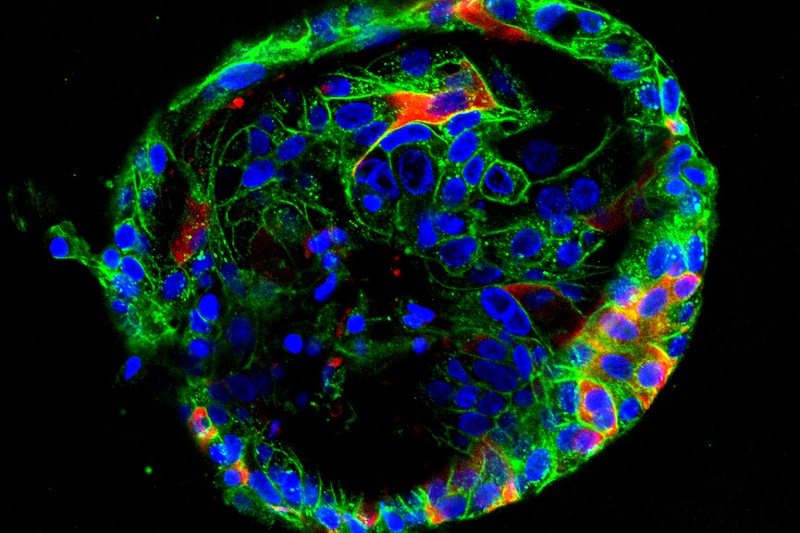每日外闻139
Blood rush
From the lungs, SARS-CoV-2 can spread to other organs, but researchers weren’t sure how exactly the virus was travelling until Montserrat and her colleagues published a study in Cell in May4. In experiments in organoids, also made from pluripotent stem cells, they showed that SARS-CoV-2 can infect the endothelium (内皮细胞) — the cells lining the blood vessels (血管) — which then allows viral particles to leak out into the blood and circulate around the body. Pathology reports of damaged blood vessels in people with COVID-19 also support this hypothesis, says Josef Penninger, a genetic engineer at the University of British Columbia in Vancouver, Canada, and co-lead author of the study5.

Human intestinal organoids infected with SARS-CoV-2 (white). Credit: Joep Beumer/Clevers group/Hubrecht Institute
Studies in organoids suggest that once in the blood, the virus can directly infect several organs, including the kidney, say Penninger and Montserrat. Although the virus infected kidney organoids, and some cells died, the researchers are not certain whether this is the direct cause of the kidney dysfunction observed in some patients.
Another study in liver organoids found that the virus can infect and kill cells that contribute to bile(胆汁) production, known as cholangiocytes(胆管细胞). Many researchers thought that the liver damage seen in people with COVID-19 was caused by an overactive immune response or drug side effects, says Bing Zhao, a cell biologist at Fudan University in Shanghai, China, who published his results in Protein & Cell6. His work “suggests that the virus can directly attack the liver tissue, which can cause liver damage”, says Zhao.
The virus can also replicate in the cells that line the small and large intestines (小肠和大肠), known as enterocytes, according to a Science study that used gut organoids7.
Although such findings are illuminating, using organoids to study the virus–host interaction is in its infancy, says Haagmans, who developed the gut organoids. “It is too early to say how relevant they are,” he says. More complex organoid systems are needed to better understand how the virus interacts with the body’s immune system to cause damage, say researchers.
“We are fairly(相当地) confident now that the virus that causes COVID-19 can infect tissue outside the lung and significantly contribute to disease,” says Penninger. But more severe outcomes, such as kidney and heart damage, are probably due to a combination of viral infection and an excessive immune response, he says.
small and large intestines:小肠和大肠
See you tomorrow










